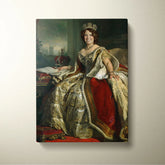-
Clan Arnott Tartan Crest Star Ceramic Ornament NT25 - Arnott Tartan
Clan Arnott Tartan Crest Star Ceramic Ornament NT25 One of the best things about Christmas is that it gives you an excuse to dress up your home with all of the lovely ornaments we associate with the holiday season. With so many different types...- From $19.25
- From $19.25
- Unit price
- per
- Arnott Tartan
-
Clan Arnott Coat Of Arms - Irish Family Crest St Patrick's Day Classic CapDX42 - Classic Cap - Arnott Coat Of Arms St Patrick's Day Classic Cap
Clan Arnott Coat Of Arms - Irish Family Crest St Patrick's Day Classic CapDX42 All of our Classic Caps are custom-made-to-order and handcrafted to the highest quality standards. Add style and personality to your hat collection with a custom printed classic cap! Constructed with...- $42.45
- $42.45
- Unit price
- per
- Classic Cap - Arnott Coat Of Arms St Patrick's Day Classic Cap
-
Clan Arnott Coat Of Arms - Irish Family Crest Classic Cap GE20 - Arnott Coat Of Arms
Clan Arnott Coat Of Arms - Irish Family Crest Classic Cap GE20 All of our Classic Caps are custom-made-to-order and handcrafted to the highest quality standards. Add style and personality to your hat collection with a custom printed classic cap! Constructed with 100% premium...- $33.45
- $33.45
- Unit price
- per
- Arnott Coat Of Arms
-
Clan Arnott Tartan Christmas Tree Skirt MA56 - Arnott Tartan
Clan Arnott Tartan Christmas Tree Skirt MA56 Product detail: 100% polyester tricot fabric, thick and durable. Suitable for not only Christmas but also the whole winter. Velcro closure and center hole allows for easy installment and removal. One-side Printing Machine washable on cold cycle...- From $48.25
- From $48.25
- Unit price
- per
- Arnott Tartan
-
Clan Arnott Tartan Halloween Pumpkin Slippers, Fluffy Spooky Slippers JG44 - Arnott Tartan
Clan Arnott Tartan Halloween Pumpkin Slippers, Fluffy Spooky Slippers JG44 Product Informations: Material: 100% polyester outer-layer and lining, rubber soles. These personalized slippers are a home staple that now becomes even more stylish with your custom touch. Each slipper is made 100% with soft,...- $38.45
- $38.45
- Unit price
- per
- Arnott Tartan
-
Clan Arnott Tartan Crest Christmas Santa Hat ET92 - Arnott Tartan
Clan Arnott Tartan Crest Christmas Santa Hat ET92 Product Detail: Material: Polyester Design Area: Single side full width printing Sizes:'S (26 x 38 cm); L (32.5 x 45 cm)- From $25.41
- From $25.41
- Unit price
- per
- Arnott Tartan
-
Clan Arnott Tartan Crest Christmas Stocking AD55 - Arnott Tartan
Clan Arnott Tartan Crest Christmas Stocking AD55 DESCRIPTION: Christmas Stocking is used to display as home decoration or meaningful gifts for friends and relatives on special occasions such as Christmas, Valentine, birthday' Dimensions: (Cuff Width x Length x Width): 20 x 40 x 28...- $24.45
- $24.45
- Unit price
- per
- Arnott Tartan
-
Clan Arnott Tartan Christmas Ceramic Ornament Highland Cows Style YO92 - Arnott Tartan
Clan Arnott Tartan Christmas Ceramic Ornament Highland Cows Style YO92 Product Detail:One of the best things about Christmas is that it gives you an excuse to dress up your home with all of the lovely ornaments we associate with the holiday season. With so...- From $14.45
- From $14.45
- Unit price
- per
- Arnott Tartan
-
Clan Arnott Tartan Crest Table Runner Cotton XS31 - Arnott Tartan
Clan Arnott Tartan Crest Table Runner Cotton XS31 Product detail: Made of durable cotton linen cloth material. Lightweight, durable and could be folded away compactly. Multi-function, stylish decor to any room or table. Gentle hand wash separately in cold water; no shrinkle; no color...- $41.15
- $41.15
- Unit price
- per
- Arnott Tartan
-
Clan Arnott Tartan Christmas Ugly Sweater BW20 - Arnott Tartan
Arnott Tartan Clan Christmas Ugly Sweater BW20 Product Detail: Each sweater is constructed from a premium woven polyester that is ultra-soft and incredibly comfortable. Features a specialty high definition heat-dye application that ensures long lasting color vibrancy even after machine washing. Fabric is durable...- $48.45
- $48.45
- Unit price
- per
- Arnott Tartan
-
Clan Arnott Tartan Scottish Lion Hawaiian Shirt RM84 - Arnott Tartan
Arnott Tartan Clan Scottish Lion Hawaiian Shirt RM84 These Hawaiian shirts and shorts are suitable for hot summer days or beach trips with your friends, family, and loved ones. This is an excellent gift, vacation outfit, or simply revamp your summer wardrobe.- Material: 95%...- $43.25
- $43.25
- Unit price
- per
- Arnott Tartan
-
Clan Arnott Tartan Saddle Handbags FN29 - Arnott Tartan Clan
Arnott Tartan Clan Saddle Handbags FN29 Product Detail: Manufactured with premium water-proof canvas material. Features a comfortable and sturdy adjustable cross-body carrying strap made with leather and high-quality stitching for long-lasting durability. Finished with multiple interior compartments to keep your items organized.- $55.15
- $55.15
- Unit price
- per
- Arnott Tartan Clan
-
Clan Arnott Tartan Crest Oven Mitt And Pot Holder (2 Oven Mitts + 1 Pot Holder) MB97 - Arnott Tartan Clan
Arnott Tartan Clan Crest Oven Mitt And Pot Holder (2 Oven Mitts + 1 Pot Holder) MB97 Product detail: A must-have item for your modern home cooking. The oven mitt & pot holder providesmaximum protection for your hands as well as brighten your mood...- $38.75
- $38.75
- Unit price
- per
- Arnott Tartan Clan
-
Clan Arnott Tartan Crest Jogger Sweatpants KZ50 - Arnott Tartan
Arnott Tartan Clan Crest Jogger Sweatpants KZ50 Product details: This unisex jogger features a soft and durable fabric. These garments are made from polyester, with each design being made-to-order 95% polyester, 5% spandex Double layer side insert pockets High definition printing colours Design will...- $48.25
- $48.25
- Unit price
- per
- Arnott Tartan
-
Clan Arnott Tartan Bow Tie YZ52 - Arnott Tartan Clan
Arnott Tartan Clan Bow Tie YZ52 Product detail: Unique item with your custom design can be worn on various occasions, such as weddings,'anniversaries, and birthday parties. 100% polyester satin, silky and durable. Adjustable neckband fits neck sizes 11.5' to 20' Flat measurement without knot:...- $34.45
- $34.45
- Unit price
- per
- Arnott Tartan Clan
-
Clan Arnott Tartan Sun Shade 2 Pieces PL83 - Arnott Tartan Clan
Arnott Tartan Clan Sun Shade 2 Pieces PL83 Car Sun Shade 28'x28'x2pcs Merging anti-UV coating and aluminized film cushion, this car sun shade can protect seatsand dashboards from cracking due to sun damage while also keeping them cool to the touch.' Material: 100 %...- $56.25
- $56.25
- Unit price
- per
- Arnott Tartan Clan
-
Clan Arnott Tartan Crest Keychain AX19 - Arnott Tartan Clan
Arnott Tartan Clan Crest Keychain AX19 Product detail: This personalized keychain for pictures are the perfect choice for a fun gift idea, the choice is yours to come up with a surprise for someone you love. The keychain is made of PMMA, environmentally, friendly,...- From $15.25
- From $15.25
- Unit price
- per
- Arnott Tartan Clan
-
Clan Arnott Tartan Unisex Baseball Jersey HT97LO74 - Arnott Tartan
Arnott Tartan Clan Unisex Baseball Jersey HT97LO74 Product Detail: Each of our baseball jerseys is custom-made-to-order and handcrafted to the highest quality standards. It is not only extremely soft to the touch but breathable as well. Our jersey is printed on sustainable fabrics so...- $42.25
- $42.25
- Unit price
- per
- Arnott Tartan
-
Clan Arnott Tartan Crest Tumbler JM73 - Arnott Tartan Clan
Arnott Tartan Clan Crest Tumbler JM73 Product Detail: Arnott Tartan Crest Tumbler Introducing our Tartan Tumbler, a perfect companion for your daily hydration needs. This mobile tumbler comes with a slide lid and an ideal size, providing convenience as you enjoy your refreshing beverages....- From $45.99
- From $45.99
- Unit price
- per
- Arnott Tartan Clan
-
Clan Blanket Arnott Tartan Crest Blanket To My Wife Style , Gift From Scottish Husband GL43 - Scots Print Blanket - Arnott Tartan Clan Crest Blanket To My Wife Style Gift From Scottish Husband
Scots Print Blanket Arnott Tartan Clan Crest Blanket To My Wife Style , Gift From Scottish HusbandGL43 Product detail: Each blanket features a premium suede polyester print for beautiful color vibrancy. Cozy underside is constructed from an ultra-soft micro fleece fabric to keep you...- $65.02
- $65.02
- Unit price
- per
- Scots Print Blanket - Arnott Tartan Clan Crest Blanket To My Wife Style Gift From Scottish Husband
Ex: Your Tartan + Product
Popular Products
Turn Me Royal Personalized Portrait from Your Photo, Custom Tartan. Custom Canvas Wall Art as Gift for Men
- From $32.45
- From $32.45
- Unit price
- / per
Royalty Couple Personalized Portrait from Your Photo, Custom Tartan. Custom Canvas Wall Art
- From $47.45
- From $47.45
- Unit price
- / per
The Queen Personalized Portrait from Your Photo, Custom Tartan. Custom Canvas Wall Art as Gift for Women
- From $32.45
- From $32.45
- Unit price
- / per
List Of Tartan
-
Clan A
- Abercrombie Tartan
- Aberdeen Tartan
- Abernethy Tartan
- Adair Tartan
- Adam Tartan
- Ayrshire Tartan
- Agnew Tartan
- Aikenhead Tartan
- Ainslie Tartan
- Aiton Tartan
- Allan Tartan
- Alexander Tartan
- Allardice Tartan
- Allison Tartan
- Anderson Tartan
- Angus Tartan
- Anstruther Tartan
- Arbuthnot Tartan
- Armstrong Tartan
- Arnott Tartan
- Auchinleck Tartan
- Ayrshire Tartan
-
Clan B
- Baillie Tartan
- Bain Tartan
- Baird Tartan
- Balfour Tartan
- Bannatyne Tartan
- Bannerman Tartan
- Barclay Tartan
- Baxter Tartan
- Beaton Tartan
- Bell Tartan
- Belshes Tartan
- Bethune Tartan
- Beveridge Tartan
- Binning Tartan
- Bisset Tartan
- Blackadder Tartan
- Blackstock Tartan
- Black Watch Tartan
- Blair Tartan
- Blane Tartan
- Blyth Tartan
- Borthwick Tartan
- Boswell Tartan
- Bowie Tartan
- Boyd Tartan
- Boyle Tartan
- Brisbane Tartan
- Brodie Tartan
- Brown/ Broun Tartan
- Bruce Tartan
- Buccleuch Tartan
- Buchan Tartan
- Buchanan Tartan
- Burnett Tartan
- Burns Tartan
- Butter Tartan
- Byres Tartan
-
Clan C
- Cairns Tartan
- Calder Tartan
- Callander Tartan
- Cameron Tartan
- Campbell Tartan
- Campbell of Breadalbane Tartan
- Campbell of Cawdor Tartan
- Carmichael Tartan
- Carnegie Tartan
- Carruthers Tartan
- Cathcart Tartan
- Chalmers Tartan
- Charteris Tartan
- Chattan Tartan
- Cheyne Tartan
- Chisholm Tartan
- Christie Tartan
- Clark Tartan
- Clelland Tartan
- Clephan Tartan
- Clergy Tartan
- Cochrane Tartan
- Cockburn Tartan
- Colquhoun Tartan
- Colville Tartan
- Cooper Tartan
- Couper Tartan
- Craig Tartan
- Cranstoun Tartan
- Crawford Tartan
- Crichton Tartan
- Crief District Tartan
- Crosbie Tartan
- Cumming Tartan
- Cunningham Tartan
- Currie Tartan
- Clan D
- Clan E
- Clan F
- Clan G
- Clan H
- Clan I
- Clan J
- Clan K
- Clan L
-
Clan M
- Maitland Tartan
- Malcolm Tartan
- Mar Tartan
- Marjoribanks Tartan
- Maxtone Tartan
- Matheson Tartan
- Maule Tartan
- Maxwell Tartan
- Meldrum Tartan
- Melville Tartan
- Menzies Tartan
- Mercer Tartan
- Middleton Tartan
- Moffat Tartan
- Moncrieffe Tartan
- Montgomery Tartan
- Monypenny Tartan
- Moncreiffe Tartan
- Monteith Tartan
- Morrison Tartan
- Mouat Tartan
- Moubray Tartan
- Mow Tartan
- Muir_More Tartan
- Muirhead Tartan
- Munro Tartan
- Murray Tartan
- Murray of Atholl Tartan
-
Clan Mc/Mac
- MacAlister Tartan
- MacArthur Tartan
- MacAlpine Tartan
- MacAulay Tartan
- MacBain Tartan
- MacBean Tartan
- MacBeth Tartan
- MacCallum Tartan
- MacCraig Tartan
- MacColl Tartan
- MacCorquodale Tartan
- MacDiarmid Tartan
- MacDonald Tartan
- MacDonald of Clanranald Tartan
- MacDonald of Sleat Tartan
- MacDonnell of Glengarry Tartan
- MacDonnell of Keppoch Tartan
- MacDougall Tartan
- MacDowall Tartan
- MacDuff Tartan
- MacEwen_MacEwan Tartan
- MacEdward Tartan
- MacFarlane Tartan
- MacGill Tartan
- MacGillivray Tartan
- MacGregor Tartan
- MacGowan (McGowan) Tartan
- MacHardy Tartan
- MacIan Tartan
- MacInnes Tartan
- MacIntyre Tartan
- MacKay Tartan
- MacKillop Tartan
- MacKellar Tartan
- Mackinlay Tartan
- MacKenzie Tartan
- Mackie Tartan
- MacKinnon Tartan
- MacKintosh / MacIntosh Tartan
- MacLeod Tartan
- MacMillan Tartan
- MacNab Tartan
- MacNaughton Tartan
- MacNeil / MacNeill Tartan
- MacNeil of Colonsay Tartan
- MacNicol Tartan
- MacPhail Tartan
- MacPhee_MacFie Tartan
- MacPherson Tartan
- MacQuarrie Tartan
- MacQueen Tartan
- MacRae Tartan
- MacRow Tartan
- MacSporran Tartan
- MacTaggart Tartan
- MacTavish Tartan
- MacThomas Tartan
- McCorquodale Tartan
- McCulloch Tartan
- McFadzen Tartan
- McGeachie Tartan
- McIver Tartan
- McKerrell Tartan
- Clan N
- Clan O
- Clan P
- Clan R
-
Clan S
- Sandilands Tartan
- Scott Tartan
- Scrymgeour Tartan
- Selkirk Tartan
- Sempill Tartan
- Seton Tartan
- Shaw Tartan
- Shepherd Tartan
- Sinclair Tartan
- Skene Tartan
- Skirving Tartan
- Smith Tartan
- Somerville Tartan
- Spalding Tartan
- Spens Tartan
- Spottiswood Tartan
- Stevenson Tartan
- Stewart Tartan
- Stewart of Appin Tartan
- Stirling Tartan
- Strachan Tartan
- Straiton Tartan
- Strange Tartan
- Strathclyde District Tartan
- Stuart of Bute Tartan
- Sutherland Tartan
- Swinton Tartan
- Clan T
- Clan U W Y
- Request Your Clan
Clan Arnott (Arnott Tartan)
1. Clan Arnott History (Arnott Tartan)
The family dwelt in the Arnot lands in Portmoak Parish, Kinrossshire, from the middle of the 12th century; there are records connecting the Arnots to the area dating back to 1105.
The name is also spelled Arnot (also Arnote, Arnocht, and Arnatt). Michael de Arnoth is listed as the owner of the lands in 1284.
In 1296, David Arnot of Fyfe paid respects. Around 1320, Matilda de Arnoth received confirmation that the island of Ellenabot in Loch Lomond existed.
He was one of the 2,000 noble landowners obligated to make an oath of fealty to King Edward I of England.
It's possible that the Michael Arnoth described in a letter written by David de Manuel in 1340 regarding the territory of Kynglassy is the same Michael de Arnot, one of the garrison at Edinburgh Castle in 1337.
The marches of Kyrknes and Louchor were testified to in 1395 by the knight Henricus de Arnot.
Although it's possible that the area had previous fortifications, Arnot Tower was constructed in the early 1400s.
The current structure was presumably constructed in 1507, when the Arnot family and other people of a like mind received a charter declaring the territories a barony.
A spiral staircase led up to a hall above and two upper levels from a vaulted cellar in the south-east corner, which has since collapsed. Around 1700, the Arnot family abandoned their tower, which ultimately crumbled into ruin.
Today, weddings and other events are held at the castle and its surrounding gardens.
Arnot Tower appears to have served as an inspiration for poets and artists as a ruin. Michael Bruce (1746–1767) composed a poem in 1760 about a Romeo and Juliet-like love story between two members of the Arnot and Balfour families, the latter of which was based at Burleigh Castle.
In 1472, Edward Arnott was recommitted to the burgh of Irvine's liberty, and in 1429, John de Arnutis received the Arnot holdings in the Fyff sheriffdom.
In 1502, David Ernot served as the archdeacon of Lothian before rising to the rank of bishop.
In the 15th and 16th centuries, George Arnot was a commercial burgess in Edinburgh, where the name was relatively popular.
A History of Edinburgh was released by Hugo Arnot in 1816.
2. Clan Arnott Tartans
The Arnott Tartan can only be woven as a special weave because it is not a stock weave. If you are interested, please get in touch with us.
When a stock woven tartan is unavailable, we use the district tartan from the area where the name originated; in the case of Arnott, this would be the Ayrshire District or Perthshire District Tartan.
Arnott Tartan
A family tartan for the Arnots, which has been documented in Scotland from the 12th century. The design was influenced by the family colors of red, white, and black as well as the colors of heather (purple and green) and earth (brown).
Ayrshire District
Perthshire District
3. Clan Arnott Crest & Coats of Arms
3.1 Clan Arnott Crest
Worn by all of the name and ancestry
3.2 Clan Arnott Coats of Arms
Note on Coats of Arms: A coat of arms is given to an individual under Scottish heraldic law (with the exception of civic or corporate arms). A 'family coat of arms' does not exist.
With the exclusions listed above, the weapons depicted below are personal weapons. The only person authorized to use these weapons is the grantee.
ARNOT of that Ilk
Argent, a chevron, Sable, between two mullets, in chief, and a crescent, in base, Gules.
4. Clan Arnott People & Places
4.1 Clan Arnott Places
The Arnott family constructed the dilapidated Arnot Tower fortress in the 16th century. It's in Perthshire and Kinross. Although there had been older structures dating back to the 15th century, the castle's current structures were first completed around 1507.
In the eighteenth century, the Arnotts gave up on the castle.
4.2 Clan Arnott People
4.2.1 Dr Neil Arnott (1788–1874)
a man with numerous skills, including those of a doctor, advocate for improved public health, inventor, patentee, lecturer, and author.
Neil Arnott MD of Bedford Square, a Gentleman well acquainted with the many departments of science, being desirous of becoming a fellow of The Royal Society, was elected a Fellow of The Royal Society on January 5th, 1838, with the following citation.
We, the undersigned, suggest him as deserving of that honor and as likely to prove a valued and useful member based on our personal knowledge.
On May 15, 1788, he was born in Arbroath, Forfarshire, Scotland. His mother provided his education at Lunan Parish School and Aberdeen Grammar School.
He received his MD from Marischal College Aberdeen in 1806. In 1813, he was given a diploma from the Royal College of Surgeons, and the following year, he was given an MD.
He voiced his concern for what he referred to as the "four necessities of life," including "air, warmth, nourishment, and exercise."
His involvement in issues relating to public health and the need for better ventilation in buildings may have inspired his interest in heating and ventilation, which was the beginning of his passion for the subject.
As a result, he published the book "Warming and Ventilating" in 1838, outlining the concepts behind the Arnott slow combustion stove. On November 30, 1854, the Royal Society bestowed upon him the Rumford medal.
For the effective creation of the smokeless fire grate that he recently launched as well as other noteworthy advancements in the use of heat for heating and ventilating apartments, according to the medal citation. He released a second book on the smokeless fireplace in 1855.
4.2.2 William Arnott - Gold Hunter and Baker
William Arnott was one of the men who left their old lives in Scotland in order to go for gold in Australia. In October 1847, William, a young baker from Fife, set out for Australia in hopes of a fresh start. On February 17, 1848, or 135 days later, he reached Sydney.
William and his younger brother David worked as bakers and confectioners together for the following three years. William made the decision to quit his job at the bakery and go prospecting for gold at the Turon River diggings in 1851.
Although William Arnott was a great baker, he wasn't a great prospector of gold. Although he didn't discover any gold, he did make a living by baking bread and pies for the gold miners.
Long, risky days of labor were typical for the gold miners. In deep, dark tunnels that were flooded, they frequently dug for hours.
William quit working on the gold fields two years later and resumed his livelihood as a baker. In Newcastle, New South Wales, he founded a modest bakery in 1865. Arnott's biscuits started being delivered to Sydney by 1882.
William Arnott purchased a factory in Sydney in 1894 that had a large workforce.
7. The Arnott Tartan: A Unique Design Celebrating Scottish Heritage
The Arnott Tartan is a remarkable tartan design that represents the Arnot(t) family, a Scottish lineage with a documented history dating back to the 12th century.
This special tartan cannot be purchased off-the-shelf; it can only be produced as a special weave. In cases where a stock woven tartan is unavailable, the Arnott Tartan is substituted with the district tartan that corresponds to the name's origin.
For example, the Ayrshire District Tartan or the Perthshire District Tartan would be used for the Arnott name.
The design of the Arnott Tartan draws inspiration from the family's signature colors, which include red, white, and black.
Additionally, hints of purple and green are incorporated to symbolize heather, while touches of brown represent the earth.
This article will explore the history, symbolism, and significance of the Arnott Tartan, shedding light on its unique qualities and its role in celebrating Scottish heritage.
8. The Arnot(t) Family: A Scottish Lineage Since the 12th Century
The Arnot(t) family is a Scottish lineage that has stood the test of time, with historical records tracing its roots back to the 12th century.
This noble family has left an indelible mark on Scottish history and continues to uphold its rich heritage to this day.
The Arnott Tartan serves as a testament to the family's legacy and provides a visual representation of their enduring pride.
9. Unveiling the Unique Design of the Arnott Tartan
The Arnott Tartan is a truly unique design that distinguishes itself from other tartans. Its vibrant colors and intricate patterns make it a standout choice for those with a connection to the Arnot(t) family.
Let's delve into the various aspects that make the Arnott Tartan so special:
9.1 Distinctive Color Scheme
The color scheme of the Arnott Tartan is carefully chosen to reflect the essence of the Arnot(t) family.
Red, white, and black form the foundation of the tartan, representing the traditional colors associated with the Scottish heritage.
These colors evoke a sense of strength, courage, and resilience that has been evident in the Arnot(t) family throughout its long history.
9.2 Symbolism of Purple and Green
In addition to the primary colors, the Arnott Tartan incorporates shades of purple and green. These colors hold significant symbolic meanings in Scottish culture.
Purple is a representation of heather, one of Scotland's iconic plants that thrives in the country's rugged landscapes.
Green, on the other hand, signifies the lushness of the Scottish countryside and the connection to nature that has shaped the Arnot(t) family's way of life.
9.3 Touches of Brown Representing the Earth
The inclusion of brown in the Arnott Tartan serves as a nod to the earth, symbolizing the Arnot(t) family's deep roots in the land and their connection to their ancestral homeland.
This earthy tone reinforces the family's ties to Scotland and pays homage to the rugged and beautiful landscapes that have shaped their identity.
9.4 Intricate Weaving Techniques
The Arnott Tartan is not simply a design on paper; it requires special weaving techniques to bring it to life.
Skilled artisans meticulously weave the tartan, ensuring that every thread aligns perfectly to create a harmonious pattern.
This attention to detail showcases the craftsmanship and dedication involved in producing the Arnott Tartan, elevating it beyond a mere piece of fabric.
10. Acquiring the Arnott Tartan: A Special Weave
Those interested in acquiring the Arnott Tartan must understand that it cannot be purchased off-the-shelf like other tartans.
Due to its unique nature, the Arnott Tartan is only produced as a special weave, crafted specifically for individuals with a connection to the Arnot(t) family.
If you're looking to add this exclusive tartan to your collection, it is essential to get in touch with the trusted sources that can facilitate its production.
11. Substituting with District Tartans: A Way to Honor Origins
In cases where the Arnott Tartan is unavailable or not feasible for various reasons, there is an alternative solution.
The district tartan that corresponds to the name's origin can be used as a substitute. For the Arnott name, the Ayrshire District Tartan or the Perthshire District Tartan would be the appropriate choices.
These district tartans pay homage to the family's roots and serve as a meaningful connection to their ancestral heritage.
12. Cherishing Scottish Heritage: The Significance of Tartans
Tartans hold a special place in Scottish culture and heritage. They are not merely patterns; they are representations of familial pride, regional identity, and historical significance.
The Arnott Tartan encapsulates all these elements and offers a unique way to celebrate Scottish heritage.
Whether it's through the traditional Arnott Tartan or the corresponding district tartan, owning and wearing these tartans enables individuals to express their connection to Scotland and honor their ancestral lineage.
13. Frequently Asked Questions (FAQs)
13.1 Can I purchase the Arnott Tartan off-the-shelf?
No, the Arnott Tartan cannot be purchased off-the-shelf. It is only produced as a special weave.
13.2 What happens if the Arnott Tartan is unavailable?
In cases where the Arnott Tartan is unavailable, the corresponding district tartan can be used as a substitute.
13.3 What are the primary colors of the Arnott Tartan?
The primary colors of the Arnott Tartan are red, white, and black, which are traditional Scottish colors.
13.4 What do the purple and green colors in the tartan represent?
The purple color represents heather, while the green color signifies the lushness of the Scottish countryside.
13.5 How can I acquire the Arnott Tartan?
To acquire the Arnott Tartan, it is necessary to get in touch with trusted sources that can facilitate its production.
14. Conclusion
The Arnott Tartan stands as a testament to the enduring legacy of the Arnot(t) family and their Scottish lineage.
Its unique design, vibrant colors, and symbolic elements make it a cherished symbol of pride and heritage.
Whether through the traditional Arnott Tartan or the corresponding district tartan, individuals can pay homage to their ancestral roots and celebrate their Scottish identity.
Owning and wearing the Arnott Tartan is more than a fashion statement; it is a connection to the past, a celebration of tradition, and a way to honor Scottish heritage.
- Choosing a selection results in a full page refresh.















































